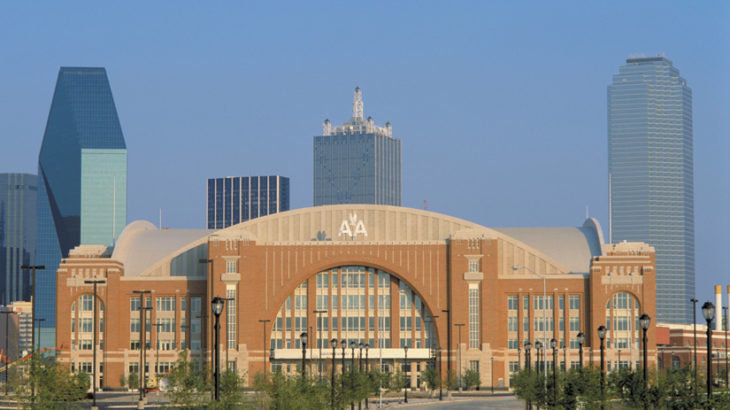As told previously in Based on Truth, Brad Mayne, CEO of Center Operating Company, found it challenging to negotiate the ins and outs of building and running American Airlines Center for the Dallas Mavericks and Dallas Stars. Answering to two team owner groups, one hockey and one basketball, can make every decision an exercise in diplomacy.
“It was a little bit of a tricky process in that first year to get financial agreements in place to be able to run and operate without the Stars and Mavs having to come out of pocket with a lot of money,” Brad understates the situation.
“It was a cooperative process we went through. Terdema (Ussery, CEO of the Mavericks), Jim (Lites, president of the Stars) and I had to do a lot of work. The teams wanted to be involved in what we created, but it was our responsibility to get it done.”
The deal with the city was created already – the city would pay $120 million toward the project; Center Operating Co. LLP had to cover anything above that. It endedup being a $412-million project.
When designing an arena for two teams playing different sports, neither is destined to be totally pleased.
The two teams were often at odds about certain design elements, Brad recalled. “We’d be in a meeting, visit about it and come out with a reasonable compromise. It must have been working correctly, because I would then get an accusing call from each organization — ‘you’re a Mavs guy’ or ‘you’re a Stars guy’ — because they didn’t get exactly what they wanted.”
For example, the discussion was heated about how many seats would be in the lower bowl. The Mavs wanted fewer seats because in 1998 they were averaging 6,500 attendance at Reunion Arena. The Stars wanted more like 8,000 seats because they were selling out after two years in the Stanley Cup, including one as champion. “That flipped when we got into the building. But at the time, we compromised in the middle. No one was happy,” Brad said.
The selling point was that COC would make more money on sale of suites if they were closer to the playing surface with fewer seats in the lower bowl. Both organizations had stakeholders who wanted the suites. And the upper suites would also be closer to the playing surface. Actually, given that he was responsible for the 110-120 nonsports events, Brad would have been better off with more expensive seats in the lower bowl as well, but the suites were still the premium revenue.
Always, his primary goal was to work toward getting a decision. “In that instance, it was a compromise and there was a reason for the compromise, because of the additional revenue the suites could generate being closer to the playing surface.”
Collaboration was the name of the game, and every design element brought its pros and cons for the teams. Change orders, though, were a different animal. Brad had certain financial and buy-off limitations on change orders. He forgets the order in question, but the exchange one such change generated is crystal clear.
Brad was meeting with billionaires Tom Hicks, owner of the Stars, and Ross Perot Jr., owner of the Mavericks, the decision-makers at the time, to get permission for a $45,000 change order. Tom and Brad were chatting while awaiting Ross, who finally arrived.
And it went something like this, obviously paraphrased:
Brad: I need your permission for this $45,000 change order.
Tom: Before we talk about that…. Hey Ross, I’m thinking about buying one of the helicopters from your dad.
Ross: Really, which one?
Tom: I think it’s the Ka… ka …
Ross: The Sikorsky?
Tom: Yes, is it a good helicopter?
Ross: What are you going to use it for?
Tom (who also owned baseball’s Texas Rangers): I want to be able to get home after a Rangers game without having to sit in traffic.
Ross: Do you have a helipad at your property?
Tom: No, but we have the room and the ability.
Ross: You understand it will cost you more to operate the helicopter than to purchase the helicopter?
Tom: I’m not concerned about the cost. My time can be better spent in the helicopter than driving my vehicle in traffic.
Ross: I’m not going to tell you if it’s a good price; you’ll have to negotiate with my dad, but it all sounds reasonable.
Tom: Great, I appreciate that. So Brad, what is this item we have to make a decision on?
Brad: It’s only $45,000.
Tom and Ross: No, you can’t spend that $45,000.
Brad (thinking, not out loud): Are you kidding me?
He can’t even remember what the $45,000 was for, because the juxtaposition was mind-blowing. It’s one of those days at the office you don’t forget, and an invaluable lesson in how billionaires think. — Based on a true story as told to Linda Deckard
(Editor’s Note: Based on Truth published a related story on the making of American Airlines Center prior to this.)
